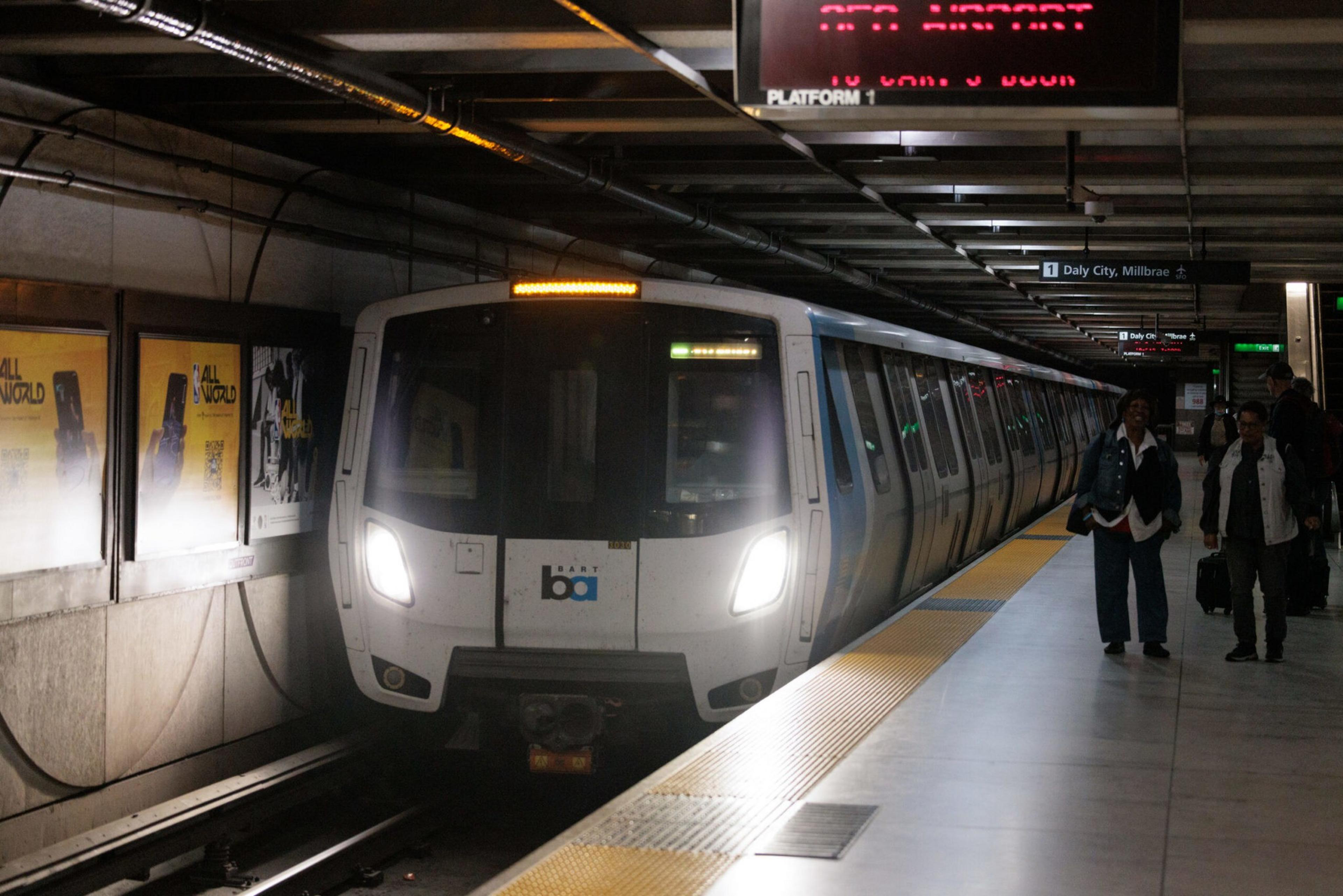BART is running shorter trains this week to increase police presence and prevent hostile, antisocial behavior as thousands of visitors descend on San Francisco for Dreamforce.
BART said the change, if implemented in the long term, would also save the agency $12 million annually as it faces looming financial troubles.
The shorter trains come as BART plans to implement a new schedule on Monday, which aims to guarantee wait times of no more than 20 minutes at any time and increase weekend and nighttime service while dialing back weekday service on some lines.
But BART may not have accounted for the frustration riders feel aboard the now-crowded trains, particularly Richmond-bound riders during Thursday’s evening commute.

John Smith, who commutes from Hayward to San Francisco for work, said the shorter trains feel like they have twice as many people.
“It’s like shoulder-to-shoulder again,” Smith said.
Smith said he’s also been caught off-guard by the truncated trains.
“I’ve had to run to the other end of the platform so I don’t miss my train,” he added.
BART riders on social media have complained (opens in new tab) about feeling packed like sardines on the smaller trains, particularly during commute hours, reminding some riders (opens in new tab) of a time before the pandemic when ridership was substantially higher.
Linda Wright, a postal worker who commutes from El Cerrito to San Francisco on BART, said she has noticed the trains she takes to and from work have gotten more crowded.
“Like sardines,” Wright said.

Wright said she is worried about BART having shorter, more crowded trains during the current Covid uptick, which comes as a new variant is circulating around the U.S.
“I’d be double-, triple-masked,” Wright said, looking at a picture of the inside of a 5 p.m. Richmond-bound BART train leaving San Francisco.
Other riders, like Zach B.—who commutes from Union City in the East Bay to Union Square and declined to share his surname—were skeptical about whether BART’s crowded trains will curb “antisocial behavior.”
“There’s, like, double the number of people in here,” he said. “I’ve seen people smoking all kinds of stuff and leaving trash, whether it’s on an empty train or a full train.”
BART said they would debut a new train schedule with shorter trains starting Monday, but the smaller six- to eight-car trains were spotted earlier this week (opens in new tab). BART announced the plan to run shorter trains in an Aug. 31 all-caps post to X, the social media platform formerly known as Twitter.
In introducing the new service, BART has promised a maximum wait of 20 minutes at all times—including weeknights and weekends, which frequently have 30-minute waits—and more frequent weekday service on BART’s busiest route, the yellow line from Antioch to the San Francisco International Airport.

BART also plans to cut back service on the green and red lines, which are less frequented and ferry passengers from the East Bay to San Francisco, from 15 minutes between trains to 20 minutes.
BART spokesperson Alicia Trost said the red and green lines are also served by the orange line, which runs from Richmond to North San Jose and is the least crowded line systemwide. Trost said under the new schedule, red and green line riders can save up to 10 minutes by taking the orange line if it comes first and connect to a timed transbay train at Bay Fair, Lake Merritt or MacArthur stations. That’s assuming the transfer trains arrive on time (opens in new tab).
Trost said in an email that the changes will add more service to and from SFO, and most Dreamforce trips on BART ferry passengers within San Francisco. Dreamforce will take place at the Moscone Center from Tuesday to Thursday.
BART has four lines that run through San Francisco and currently has trains arriving at BART stations every four minutes between Daly City and West Oakland, according to Trost.
Trost said the transit agency started running shorter trains last week to analyze ridership data as they gear up to roll out modified service next week.
Trost said BART will use the data to see if riders use the transit agency’s orange line—which runs between Richmond and North San Jose—and transfer to the yellow line for trips to San Francisco.
“We are looking to see how things smooth out as we increase yellow line service starting on Monday, as well as the reduced service on the green and red line,” Trost said. “We will watch to see if more people shift to an orange line train and transfer.”
Trost said not all trains have been shortened, but BART first started running trains with fewer cars last week. On Thursday, BART was running six-car, eight-car, nine-car and 10-car trains, but Trost did not elaborate on how many of each were in service.
The cost-cutting measures and service changes are a bid to bring back passengers and save money as the agency faces looming financial troubles brought on by the end of federal Covid funds (opens in new tab) and tanking ridership (opens in new tab).
